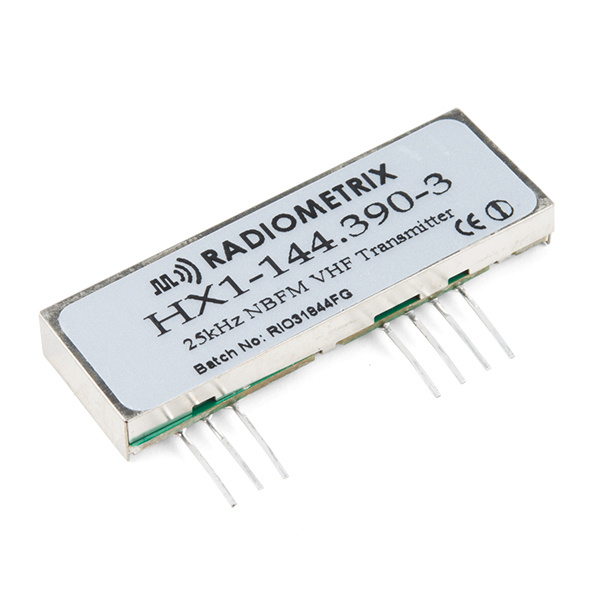HX1 APRS Transmitter Hookup Guide
Introduction
The HX1 is a low-power radio transmitter set to a fixed frequency of 144.390MHz. In North America this frequency is used for the Automatic Packet Reporting System, or APRS.
APRS is a standard used by amateur-radio operators to broadcast location and sensor data. This data can be received by anyone with the proper equipment, and is aggregated on the internet through gateways run by the APRS community.
APRS is used to share real-time data including vehicle location (GPS), weather stations, high-altitude balloon tracking, remote sensor platforms, disaster relief coordination, and more. It’s effectively an open-source, open-data, community-run, free to use, IoT system with potentially worldwide coverage.
Required Materials
To follow along with this guide, you will need the following materials.
- A HX1 Transmitter.
- A 5V Arduino such as the SparkFun RedBoard.
- Since the HX1 is a "bare" transmitter, you'll need a microcontroller programmed to properly format the transmission. We'll cover an Arduino project to do this later in this guide.
- A power supply capable of 150mA or more, such as a 9V Wall Adapter.
- Any sensors your application requires.
- The Arduino code we'll run later makes use of a GPS receiver, Antenna, and Temperature Sensors.
- An antenna tuned to 144.39MHz (or more generally the 2-meter band)
- The HX1 requires an external antenna to operate. We'll show you how to construct one later in this guide.
- An amateur radio license.
